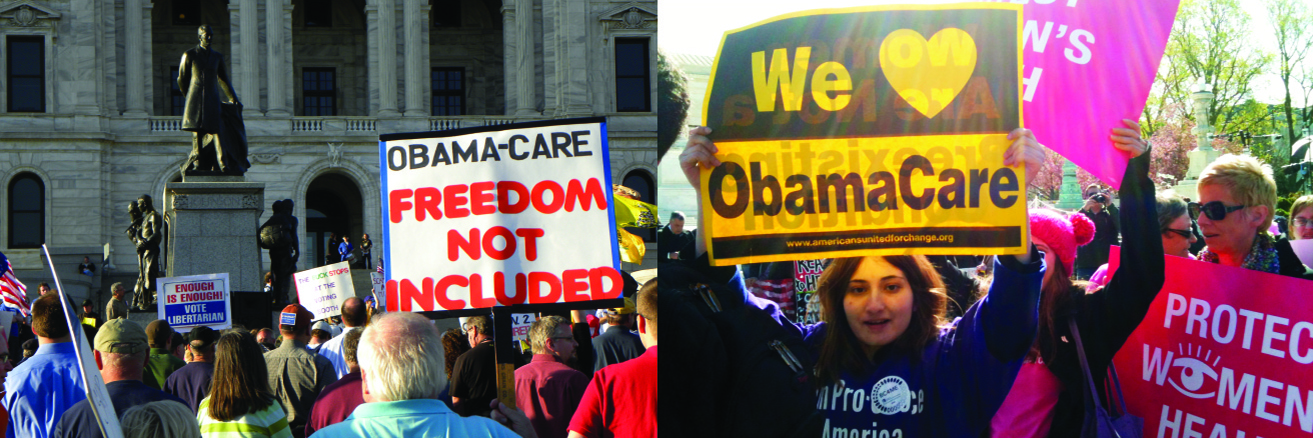Chapter 10: Interest Groups and Lobbying
Introduction to Interest Groups and Lobbying

The 2010 Patient Protection and Affordable Care Act (ACA), also known as Obamacare, represented a substantial overhaul of the U.S. healthcare system.[1] Given its potential impact, interest group representatives (lobbyists) from the insurance industry, hospitals, medical device manufacturers, and organizations representing doctors, patients, and employers all tried to influence what the law would look like and the way it would operate. Ordinary people took to the streets to voice their opinion (Figure 10.1). Some state governors sued to prevent a requirement in the law that their states expand Medicaid coverage. A number of interest groups challenged the law in court, where two Supreme Court decisions have left it largely intact.
Interest groups like those for and against the ACA play a fundamental role in representing individuals, corporate interests, and the public before the government. They help inform the public and lawmakers about issues, monitor government actions, and promote policies that benefit their interests, using all three branches of government at the federal, state, and local levels.
In this chapter, we answer several key questions about interest groups. What are they, and why and how do they form? How do they provide avenues for political participation? Why are some groups advantaged by the lobbying of government representatives, while others are disadvantaged? Finally, how do interest groups try to achieve their objectives, and how are they regulated?
*Watch this video to learn more about interest groups and how they influence lawmakers and politics in America.
- Lawrence R. Jacobs and Theda Skocpol 2010. Health Care Reform and American Politics: What Everyone Needs to Know Oxford: Oxford University Press. ↵

